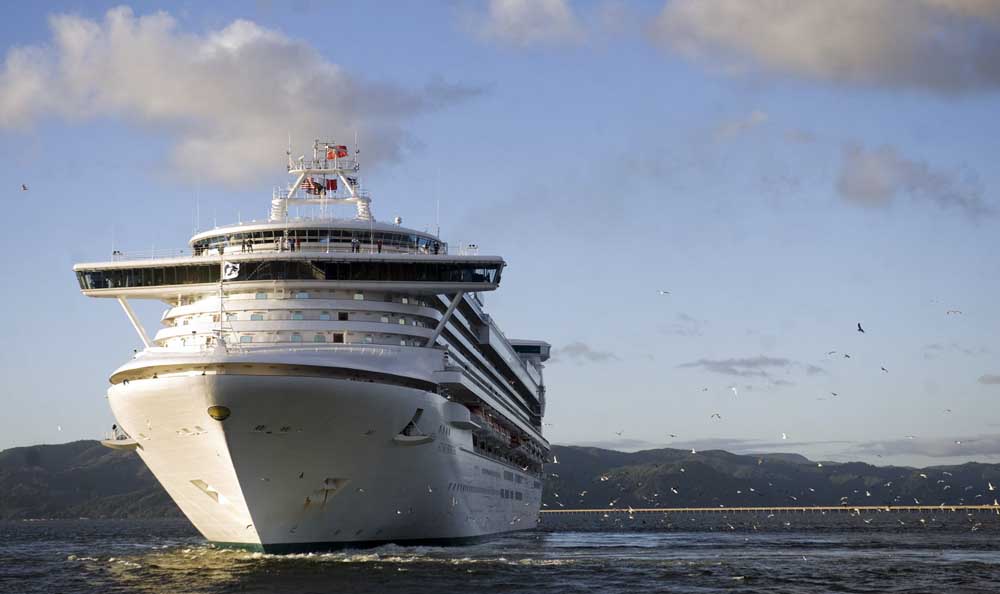Tourism booms on North Coast
Published 5:45 am Wednesday, April 29, 2015

- Alerted by the blast of the 951-foot Star Princess's horn, hundreds of seagulls say their goodbyes and help the visiting cruise ship push off from the face of the Port of Astoria's Pier 1 in September 2013.
Clatsop County has many reasons to be celebrating its cash cow during the U.S. Travel Association’s National Travel and Tourism Week, May 2 to 10.
Trending
Travel Oregon’s recently released annual report on travel impacts by Dean Runyan Associates quantifies the massive economic impact of visitors to Clatsop County.
“Nationally, travel and tourism has become America’s No. 1 services export,” CEO Todd Davidson of Travel Oregon said, adding that tourism services comprise 10 percent of all U.S. exports.
Travel Oregon is a semi-separate state agency created by the Oregon Legislature in 2003 to promote tourism to Oregon. Davidson and Linea Gagliano have been on a tour of the state, promoting the Dean Runyan study and the revamp of its “7 Wonders of Oregon” marketing campaign (http://traveloregon.com/7wonders), the closest wonder being the entire Oregon Coast.
Trending
The report shows year-over-year increases in tourism’s impact on Clatsop County, including a more than 27 percent increase in direct spending, from $405.2 million in 2010 to $516.7 million in 2014. The report found that every $94,460 spent by visitors creates one job; and every $100 in visitor spending generates $27 in employee earnings and $4.20 in local and state tax revenue.
“It’s probably been … five years of real increases in real spending,” said Bill Klein, who specializes in economic and market research for Dean Runyan and has been doing such reports for the past 15 years. Dean Runyan’s reports on Oregon stretch back to 1991.
According to the most recent report, 22.3 percent of Clatsop County’s employment in 2013 could be tied to the travel industry, the highest mark in the state and just barely ahead of Lincoln County. Clatsop County’s annual overnight visitor days in 2014, divided by the county’s population, translated to 27 percent of its population on a given night being visitors.
Klein said employment in the tourism industry started picking up about a year later than spending. The report found that industry employment tied to travel spending, dominated by the lodging and food service sectors, has increased over the same five-year time frame by 10 percent, from 3,520 in 2010 to 3,880 in 2014.
“The bottom line for my community is bed taxes, how many people are here,” said Jon Rahl, the tourism marketing manager for the city-funded Seaside Visitors Bureau.
Rahl said one of the easiest statistics to track is transient room taxes, used to fund the bureau and similar community improvement programs around Clatsop County. According to the Dean Runyan study, Clatsop County has had a 30 percent increase from 2010 to 2014 in local and state taxes collected from the tourism industry.
“We have 13 consecutive quarters of year-over-year growth,” Rahl said of Seaside’s performance. In the first three financial quarters of the 2014-15 fiscal year, Seaside earned $2.5 million, equal to what it earned in the entire 2010-11 fiscal year, which runs July 1 to June 30. And that doesn’t include the revenue Seaside will collect during one of its busiest quarters between now and June.
Rahl said he hears anecdotally from Seaside-area businesses that winter weekends are increasingly becoming like summer weekends used to be.
Caroline Wuebben of the Holiday Inn in Astoria, which recently announced the expansion of its 78-room hotel by another 20 rooms, said her location is at full capacity between Memorial Day and September, with rates charged for rooms increasing across the county.
Looking into reports from the Oregon Restaurant and Lodging Association, Wuebben said she’s noticed the Oregon Coast is driving the state’s increase in occupancy rates, including a 15 percent increase for this February over a year ago.
Wuebben and Rahl both credited the milder weather and lack of snow in the mountains to the increased coastal traffic. But they also noted the extensive regional marketing campaigns local chambers, the visitors bureau and other groups are using to lure visitors.
The Seaside Visitor’s Bureau gets 20.1 percent of whatever lodging tax is collected in a given year, Rahl said, spending between $250,000 and $300,000 of it promoting Seaside throughout the region.
For the past four springs, the bureau has partnered with the Astoria-Warrenton Area and Cannon Beach chambers of commerce on the “Oregon’s North Coast” campaign, advertising online in Portland, Seattle and Vancouver, British Columbia.
“We’re definitely finding that our core demographic is still young families,” Rahl said, adding that the demographics coming to Seaside are expanding in tandem with the culinary offerings and events.
Since 2010, the Astoria-Warrenton Area Chamber has partnered with Maxwell PR and Robeson Communications on its own regional marketing efforts. It’s taken multiple iterations, from several different targeted campaigns to www.travelastoria.com. This year, Maxwell PR Account Manager Sara Stewart said, the focus is on family travel, motorcyclists, beer aficionados, foodies and, of course, the 30th anniversary of the Goonies.









